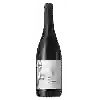
Winery Jeff CarrelTres'Or
This wine generally goes well with spicy food and sweet desserts.
Food and wine pairings with Tres'Or
Pairings that work perfectly with Tres'Or
Original food and wine pairings with Tres'Or
The Tres'Or of Winery Jeff Carrel matches generally quite well with dishes of spicy food or sweet desserts such as recipes of thai shrimp soup (tom yam goong) or tiramisu (original recipe).
Details and technical informations about Winery Jeff Carrel's Tres'Or.
Discover the grape variety: Manto negro
This grape variety is native to the Balearic Islands (Spain), more precisely to the island of Mayorque, and has been cultivated for a very long time. D.N.A. analyses have shown that it is the result of a natural cross between the sabaté and the callet cas concos (negrella), the latter being in danger of extinction. Manto negro is hardly known in other wine-producing countries, but in France it should be interesting for the production of original rosé wines that are pleasant to drink.
Informations about the Winery Jeff Carrel
The Winery Jeff Carrel is one of of the world's great estates. It offers 91 wines for sale in the of Muscat de Rivesaltes to come and discover on site or to buy online.
The wine region of Muscat de Rivesaltes
The wine region of Muscat de Rivesaltes is located in the region of Rivesaltes of Languedoc-Roussillon of France. Wineries and vineyards like the Domaine Boudau or the Domaine Lafage produce mainly wines natural sweet, sweet and white. The most planted grape varieties in the region of Muscat de Rivesaltes are Melon et Muscadelle, they are then used in wines in blends or as a single variety. On the nose of Muscat de Rivesaltes often reveals types of flavors of earth, spices or melon and sometimes also flavors of mango, dried apricot or non oak.
The wine region of Languedoc-Roussillon
Languedoc (formerly Coteaux du Languedoc) is a key appellation used in the Languedoc-Roussillon wine region of southern France. It covers Dry table wines of all three colors (red, white and rosé) from the entire region, but leaves Sweet and Sparkling wines to other more specialized appellations. About 75% of all Languedoc wines are red, with the remaining 25% split roughly down the middle between whites and rosés. The appellation covers most of the Languedoc region and almost a third of all the vineyards in France.
The word of the wine: Alcoholic fermentation
Transformation of sugars into alcohol under the effect of yeast. These yeasts exist in their natural state in the vineyards and in the cellars. Artificial seeding with selected yeasts is however very often practiced.













